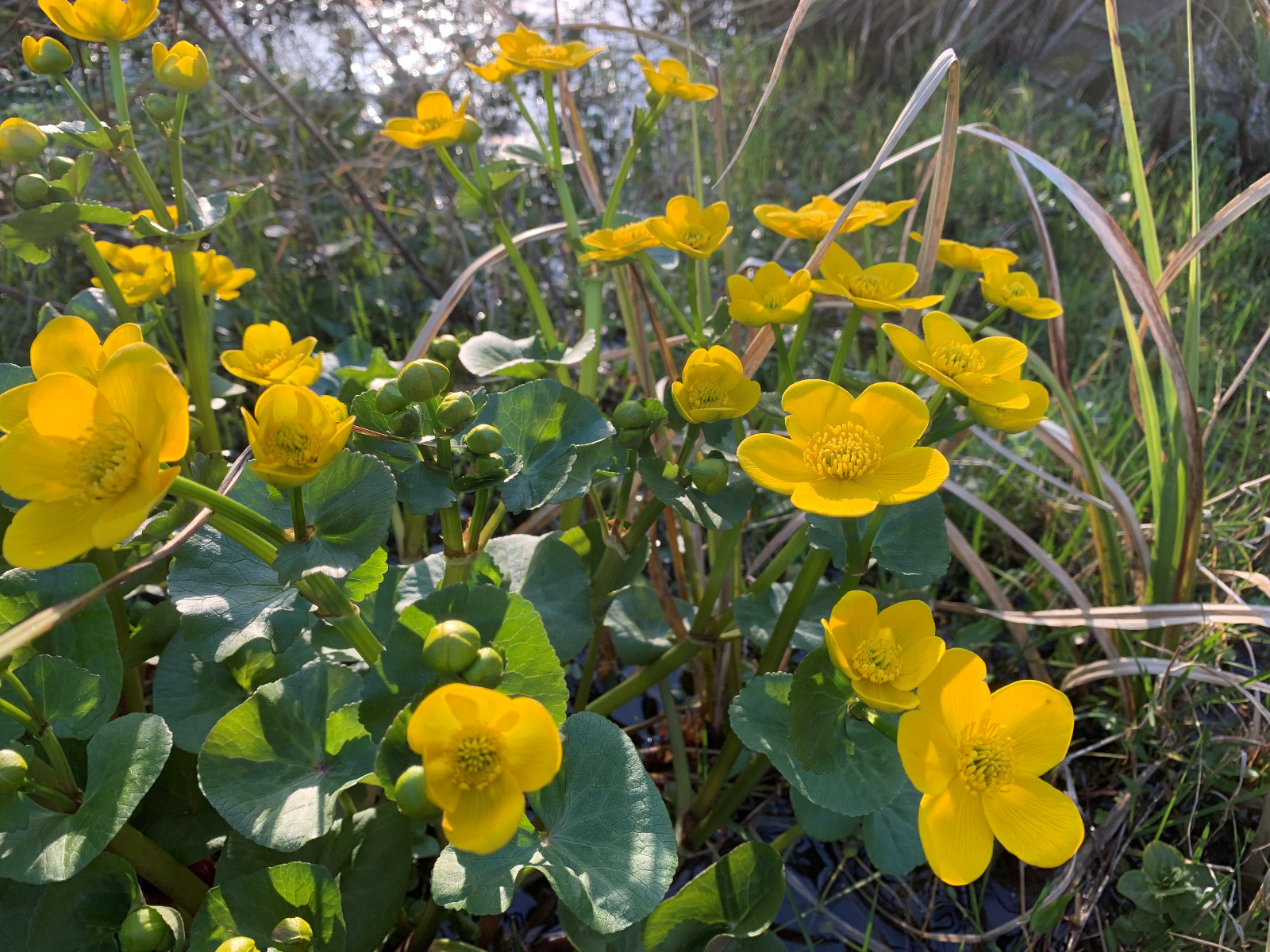God save the Kingcup
It’s another historic day in the UK as we see the coronation of a King who has a keen interest in the natural world and a love of gardening. It seems only appropriate to showcase a water gardening favourite which is not only a tried-and-true native plant but is still flowering in many parts of the country.

Although known to many as the Marsh marigold, it seems only fitting under the circumstances to use one of the alternative common names and stand patriotically by the British Kingcup. Caltha palustris is a moisture-loving plant that can be grown as a marginal, or as a bog plant in reliably wet soil. One of the first pond plants to bloom in the spring, the kingcup provides nectar for bumblebees and other pollinators at a time when resources can be scarce and weather conditions erratic. Later in the year, their foliage forms a low canopy around 45cm high that provides shelter to wallowing frogs and other wildlife.
Those cheery yellow flowers are very conspicuous and give rise to a large number of local names. Wikipedia lists the following: brave bassinets, crazy Beth, horse blob, Molly-blob, May blob, mare blob, boots, water boots, meadow-bright, bullflower, meadow buttercup, water buttercup, soldier's buttons, meadow cowslip, water cowslip, publican's cloak, crowfoot, water dragon, drunkards, water goggles, meadow gowan, water gowan, yellow gowan, goldes, golds, goldings, gools, cow lily, marybuds, and publicans-and-sinners. This is why botanical names save a lot of guess work, as well as space on labels!
Whatever you call it, this plant has simple needs that are easily met. Grown on a marginal shelf in a pond plant basket, it will bulk up nicely and can be divided and replanted every couple of years. Flowering will be maximised by using specialist solid fertilisers and placing the plant in a sunny position. Deadheading after flowering will often encourage more flowers and ensures the plant saves energy that would otherwise go into producing seeds. Old foliage can develop mildew, which can also be a problem in dry conditions. Affected leaves should be removed and any dead foliage tidied up before active growth in late winter.
A couple of forms are available, including the white-flowered Himalayan Caltha palustris alba which is less vigorous and makes a good choice for smaller ponds, although this variety prefers to be a little less wet at the roots and should sit higher in the pond. The double flowered ‘flore pleno’ and ‘plena’ types are bright and cheery but less attractive to wildlife thanks to a lack of nectar and pollen. The Giant marsh marigold may be seen as Caltha polypetala or Caltha palustris polypetala, as the name implies this is about double the size of the standard kingcup and is a showy plant for the larger watergarden or bog bed.
Whichever form you choose for your pond you’re certain to enjoy this plant for many springs to come. Long live the kingcup!


